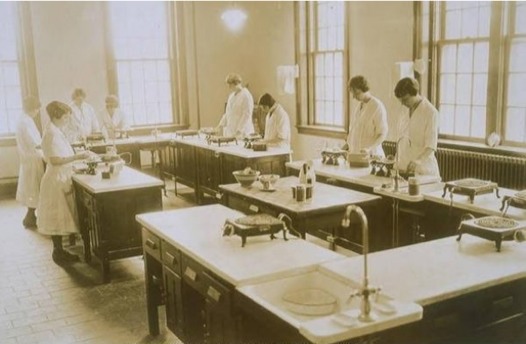Sign up for FlowVella
Sign up with FacebookAlready have an account? Sign in now
By registering you are agreeing to our
Terms of Service
Loading Flow


Created to train men in the skills of farming at a time when agriculture and rural life were feared to be in decline, the Storrs Agricultural College (the precursor to University of Connecticut) also trained women in what was first called domestic science and later home economics.
Nutritional Science

From Aprons to Lab Coats.
Women were first admitted to the Storrs Agricultural College in 1893, when Domestic Science was added to the curriculum. In 1899 the institution was renamed the Connecticut Agricultural College. Its 1906-07 Bulletin offers much food for thought about just what higher education was and meant at the turn of the 20th century. For example, “Course No. 7” in Home Economics required courses in English, German, History, Algebra, Geometry, Elocution, and Economics—all part of a liberal arts curriculum. But women students were also required to take courses related to farming: Poultry, Practical Poultry, and Ornithology; Botany, Horticulture, and Forestry; and Meteorology. -